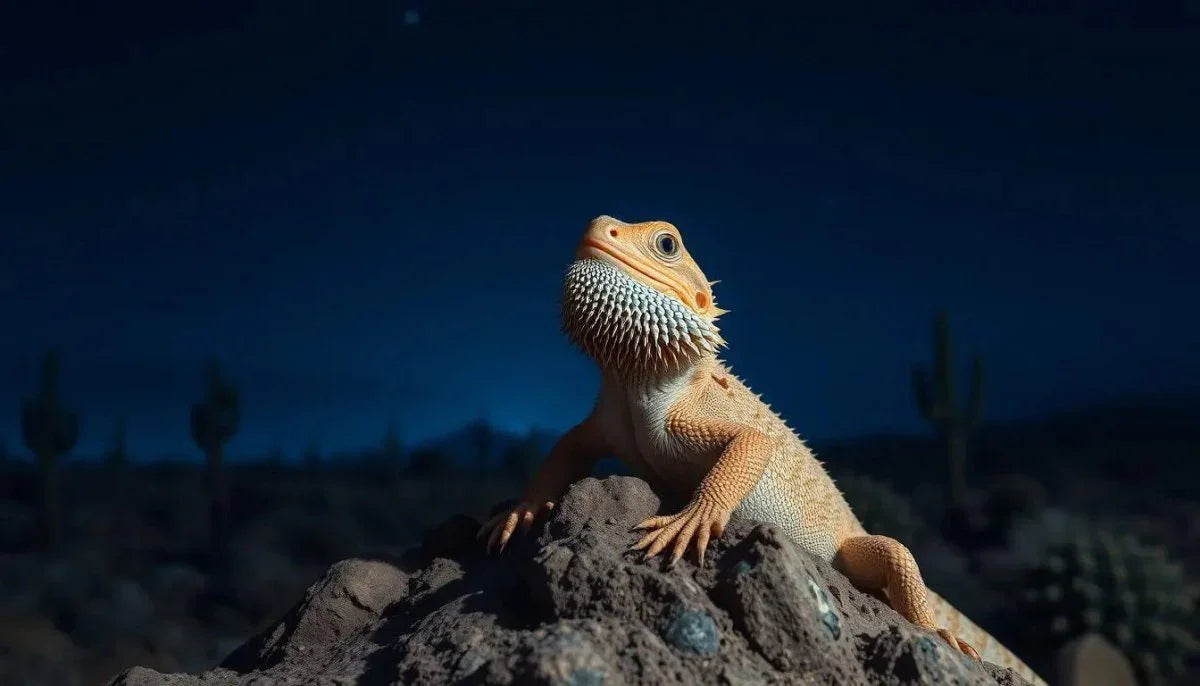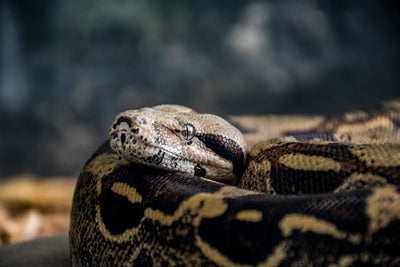As the sun sets and the world is enveloped in darkness, you may find yourself wondering - can bearded dragons see in the dark? These fascinating reptiles have captured the hearts of many pet owners, and understanding their unique visual capabilities is crucial for providing them with the best possible care.
Bearded dragons are native to the arid regions of Australia, where they have adapted to thrive in a variety of lighting conditions. While they may not possess the same night vision as some nocturnal animals, their eyes are designed to function effectively in both bright and low-light environments.
The Anatomy of a Bearded Dragon's Eyes
Bearded dragons have relatively large eyes compared to their overall body size. This is an evolutionary adaptation that allows them to have a wider field of vision, which is essential for spotting predators and prey in their natural habitat.
The eyes of a bearded dragon are composed of several key components, including:
- Cornea: The transparent, curved front part of the eye that helps focus light.
- Pupil: The opening in the center of the iris that controls the amount of light entering the eye.
- Iris: The colored part of the eye that surrounds the pupil and helps regulate light.
- Retina: The light-sensitive layer at the back of the eye that converts light into electrical signals that the brain can interpret.
These components work together to allow bearded dragons to see their surroundings, detect movement, and respond to changes in their environment.
Bearded Dragons' Ability to See in the Dark
While bearded dragons are not considered true nocturnal animals, they do possess the ability to see in low-light conditions. This is due to the presence of specialized cells in their retinas called rods, which are responsible for detecting and processing light.
Rods are particularly sensitive to low levels of light, allowing bearded dragons to navigate and perceive their surroundings even when the sun has set. However, it's important to note that their vision in the dark is not as sharp or detailed as their daytime vision.
In addition to their rod cells, bearded dragons also have cone cells in their retinas, which are responsible for color vision and fine detail. This combination of rod and cone cells gives bearded dragons a unique visual advantage, allowing them to see both in low-light conditions and in bright sunlight.
Factors that Affect Bearded Dragons' Night Vision
While bearded dragons can see in the dark, there are several factors that can influence their night vision capabilities:
- Age: Younger bearded dragons may have better night vision than older individuals, as their eyes and visual systems continue to develop and mature over time.
- Health: Any underlying health issues or eye problems can impact a bearded dragon's ability to see in low-light conditions.
- Lighting Conditions: The amount of ambient light in the bearded dragon's environment can affect their night vision. Providing appropriate lighting, such as a low-wattage heat lamp or moonlight-simulating bulb, can help optimize their visual capabilities.
It's important to note that while bearded dragons can see in the dark, they may not be as active or responsive during nighttime hours. They are generally more active during the day, when their vision is at its sharpest.
Caring for Bearded Dragons in Low-Light Conditions
When caring for a bearded dragon, it's essential to consider their visual needs and provide them with the appropriate lighting and environment. Here are some tips for caring for bearded dragons in low-light conditions:
- Provide Adequate Lighting: Ensure that your bearded dragon's enclosure has a proper day/night lighting cycle, with a basking area during the day and a dimmer, low-wattage light source at night.
- Avoid Sudden Changes in Lighting: Sudden changes in lighting can be stressful for bearded dragons and may impact their vision. Gradually transition between day and night lighting to allow their eyes to adjust.
- Monitor for Signs of Vision Issues: Keep an eye out for any signs of eye problems, such as cloudiness, redness, or changes in behavior, and consult a veterinarian if you notice any concerns.
- Offer Enrichment: Provide your bearded dragon with various hiding spots, branches, and other objects that they can explore, both during the day and at night, to stimulate their natural curiosity and visual abilities.
By understanding the unique visual capabilities of bearded dragons and providing them with the appropriate care and environment, you can ensure that your scaly companion thrives and enjoys a high quality of life.
Conclusion
Bearded dragons may not be able to see in the dark as well as some nocturnal animals, but they do possess the ability to navigate and perceive their surroundings in low-light conditions. Their combination of rod and cone cells in their retinas allows them to see both in bright sunlight and in the dimmer hours of the day and night.
By understanding the factors that affect their night vision and providing them with the proper lighting and care, you can help ensure that your bearded dragon is happy, healthy, and able to thrive in their environment. So, the next time you find yourself wondering if your scaly friend can see in the dark, you can rest assured that they have the visual capabilities to navigate their world, even when the sun goes down.






